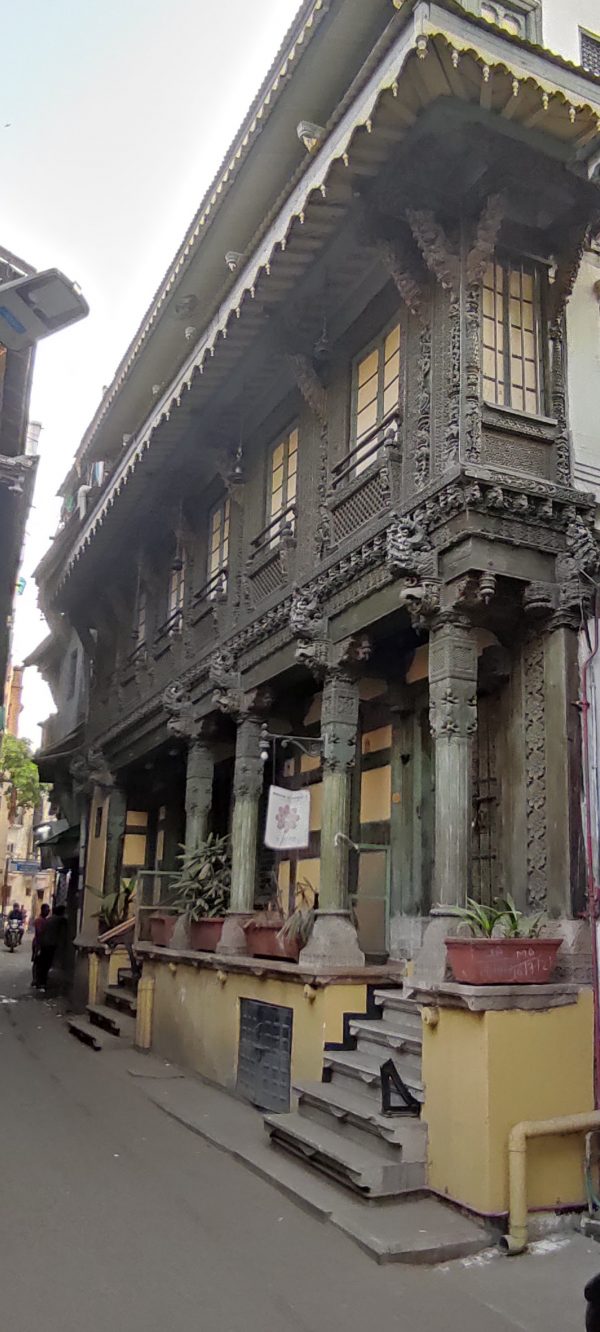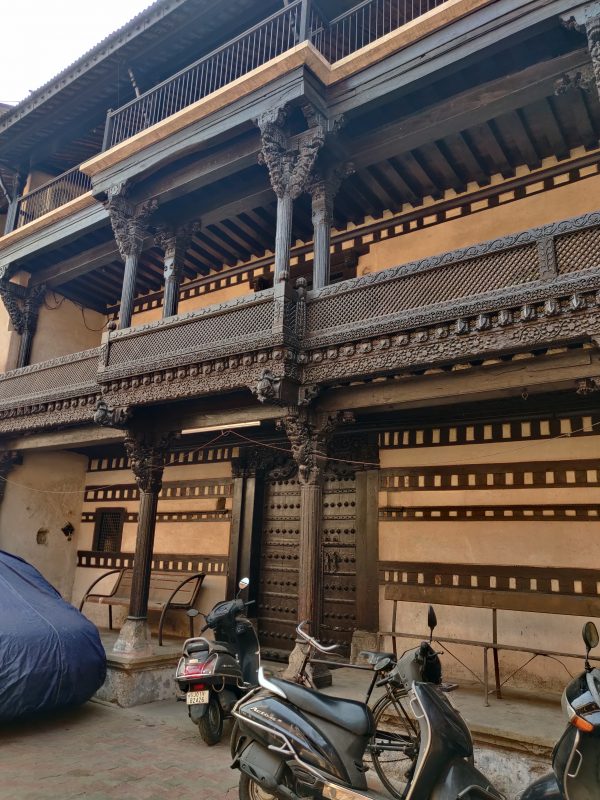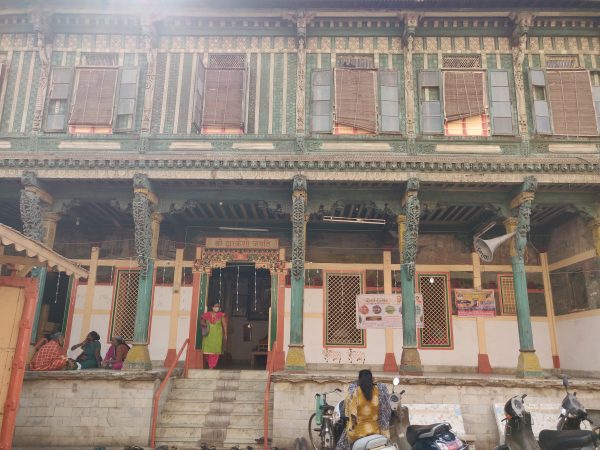Private Heritage Management for World Heritage City
The Case of Ahmedabad
This contribution explores the hurdles faced by private heritage building owners in availing the benefits of heritage tradable development rights (HTDR) – a floor space index (FSI)/ floor area ratio (FAR) certificate, provided to the heritage property owners by the local government, which can be traded with developers/ builder to use the proceeds for conservation of the heritage structures. FSI refers to the ratio of the permissible built-up area on a plot to the total plot area. From a tedious application process and issues with ownership documentation to insufficient financial incentives and disbursement challenges, the post highlights the various factors contributing to the slow progress of heritage conservation in Ahmedabad (India). As government responses grapple with the fallout from monument controversies worldwide, questions of ownership, value and regulation of heritage underscore the need for a more inclusive approach to heritage conservation. Events such as the toppling of statues to repatriation of cultural artefacts have highlighted the disconnect between traditional heritage frameworks and the diverse perspectives of affected communities. We examine these challenges through the lens of property owners in this blog contribution for the symposium (see Botha, Viswanath and Wiseman) titled “Bridging Epistemic Divides in Cultural Heritage Protection,” and address this schism by fostering dialogue among stakeholders.
Built in the 15th century CE, Ahmedabad’s walled city is a vibrant heritage area even today. UNESCO inscribed the Historic city of Ahmedabad as a world heritage site under categories (ii) and (v) outlined under Section II.D (p29) of the Operational Guidelines for the Implementation of the World Heritage Convention in 2017. The historic walled city comprises 12 gates, its distinctive pols –gated communities with residences packed along narrow residential streets, khadki – inner entrances to the pol, and a unique amalgamation of a multicultural character including Gujarat, Sultanate, Mughal, Maratha and British architectural styles. UNESCO enlists Ahmedabad’s timber-based architecture of exceptional significance, contributing to its cultural traditions, arts and crafts, myths and symbolism, and design. This listing highlights the composite timber and masonry architecture as one of the outstanding universal value (OUV) in the inscription. With close to 2,800 heritage structures nominated by the Ahmedabad Municipal Corporation (AMC), most of which are private residential properties, the city faces the daunting challenge of funding their conservation while maintaining its OUV and embracing modern lifestyles. AMC’s efforts to incentivize residential property conservation through the HTDR mechanism introduced in 2014, have yielded limited results since then and lack the potential to scale up in the future in its current form.

Traditional Gujarat wooden architecture

Photos by the authors.
At the Mercy of Owners
The conservation of privately owned heritage buildings is dependent on the owner’s willingness, which is further dependent on the affordability to conserve, awareness, access & knowledge of resources and incentives for the same.
Residential properties form a significant share of the timber-based architecture of Ahmedabad’s historic city. Most of these residences are a part of the traditional fabric of a pol. Pols are gated communities organised based on their social, economic, religious or cultural background. They are usually characterised by narrow streets and intermittent chowks (open spaces) between tightly packed residential properties. The timber-based architecture in residential buildings is structural and ornamental with carved wooden columns, beams and brackets, and intricately carved entablatures, cornices, eaves, doors and windows. Conserving such houses requires high-quality processed timber and master craftsmanship making it expensive.
Recognizing this, AMC introduced the HDTR policy to incentivize heritage property owners by providing tradable FSI of up to 50 percent of the consumed built-up area. The generated revenue from its sale must be utilised for the repair and restoration of the heritage residential properties. However, as per AMC’s website, only 57 heritage properties out of 2,236 residential buildings have been able to obtain a HTDR certificate since its introduction in 2014.
The Roadmap Prescribed by Heritage Tradable Development Rights
Several challenges have been identified with HDTR policy that are restricting the owners from obtaining an HTDR certificate.
Firstly, the conservation of heritage properties comes with a hefty price tag, and the burden of this cost initially falls upon the private property owner – a part of which can be recovered by the sale of the HTDR certificates. The challenge intensifies as the small volumes of HTDR result in relatively meagre incentives. Builders find it more convenient to acquire TDR from a single, larger source. This significantly complicates the HTDR monetization, limiting the appeal of the HTDR for restoration. Additionally, securing loans or credit to fund the conservation of heritage properties, especially without aid from HTDR until the completion stage, proves notably difficult. Traditional banking institutions do not entertain properties older than 55 years for home renovation loans.
Secondly, the issue of unconsumed FSI remains unaddressed within the heritage conservation framework. Numerous heritage properties have not fully utilised the permitted FSI – typically, 2 in the walled city of Ahmedabad (translating to a permissible built-up area of 2 times the total plot area). As HTDR is contingent on the built-up area consumed, heritage property owners who have not maximised their FSI face a financial setback. This condition results in a loss of potential monetary gains and disincentivises private property owners to pursue restoration efforts.
Thirdly, for an HTDR application to proceed, the heritage property must have undisputed owner(s), a fact substantiated by the proof contained in the latest property card, a prerequisite for the application process. The challenges arise from uncertainties associated with heirship, legal transfers, and outdated property records. Complicating matters further, some properties have multiple owners, each holding different parts of the sub-divided property, including vertical ownership. This introduces potential hurdles that may result in delays and disapproval of HTDR applications. The Heritage Conservation Committee (HCC) – a statutory body constituted by the state government to review building permission applications of listed heritage properties, does not have an objective framework to review HTDR applications. The HCC relies heavily on subjective judgments to assess proposed modifications to heritage buildings. Moreover, resolving ownership disputes would be a challenge for any committee, or even displacement of heritage succumbing to economic conditions (see Starrenburg).
Lastly, it’s noteworthy that the Ahmedabad Urban Development Authority (AUDA) – a metropolitan authority in-charge of co-preparing the city’s master plan with AMC, actively sells tradable FSI including HTDR, to developers in transit-oriented zones, affordable housing zones, and slum redevelopment projects. However, the presence of alternate sources of TDR potentially undermines the sale/ purchase of the HTDR. In the absence of concerted efforts by AUDA and AMC to prioritise the sale of HTDR, it naturally acts as a deterrent for TDR purchasers.

Grade IIB heritage building: a traditional pol house with wooden structure and ornamentation in Ahmedabad. Photo by the authors.
Good but Not Good Enough
Nevertheless, the HTDR mechanism remains a pivotal tool for the conservation of heritage properties. Despite its potential, there is room for improvement through specific provisions and modifications to ensure greater feasibility. Success in heritage conservation hinges on factors such as willingness, affordability, awareness, available resources, and incentives, making it crucial to protect the remaining heritage buildings from deterioration.
To enhance the HTDR mechanism, AMC must make it more user-friendly for heritage property owners. Consideration could be given to revising the TDR FSI credit percentages, possibly increasing them to provide higher benefits. Facilitating larger initial reimbursements would alleviate financial constraints for property owners, fostering more robust restoration efforts. Collaborating with banks, AMC could act as a guarantor, securing aid for heritage property owners and addressing the existing gap in accessible credit options.
An effective marketing strategy is imperative to increase awareness and participation among heritage property owners. Streamlining the restoration process by involving structural engineers, conservation architects, and other relevant practitioners would contribute to more efficient and informed decision-making.
Furthermore, establishing an objective framework for the HCC would expedite the assessment process, ensuring a systematic and fair evaluation of HTDR applications. Finally, a comprehensive policy-level review of the HTDR within Ahmedabad’s development plan is needed to guarantee the efficient flow of FSI into receiving zones, ultimately fortifying the city’s commitment to preserving its rich cultural heritage.
In conclusion, the case of private heritage management in Ahmedabad underscores the complex interplay of factors influencing the preservation of its rich cultural heritage. While the HTDR is a promising mechanism to incentivize conservation efforts, its current implementation faces significant challenges. Addressing these hurdles requires a multifaceted approach, including streamlining application processes, enhancing financial incentives, improving access to credit, and fostering greater collaboration between stakeholders. By bolstering the HTDR mechanism and implementing targeted reforms, Ahmedabad can work towards safeguarding its historic treasures while embracing the demands of modern urban life. As custodians of this invaluable legacy, it is imperative for all stakeholders to join forces in realising a vision of heritage conservation that is both sustainable and inclusive.

Manvita Baradi is the Founder and Director of the Urban Management Centre. She is also the executive director of the Theatre and Media Centre – an institute dedicated to the preservation of Gujarati theatre and the incubation of modern creators and media.

Anurag Anthony is the Chief Technical Officer at Urban Management Centre. He is an expert in local government management across sectors including heritage management, urban design, water-sanitation and community engagement.
